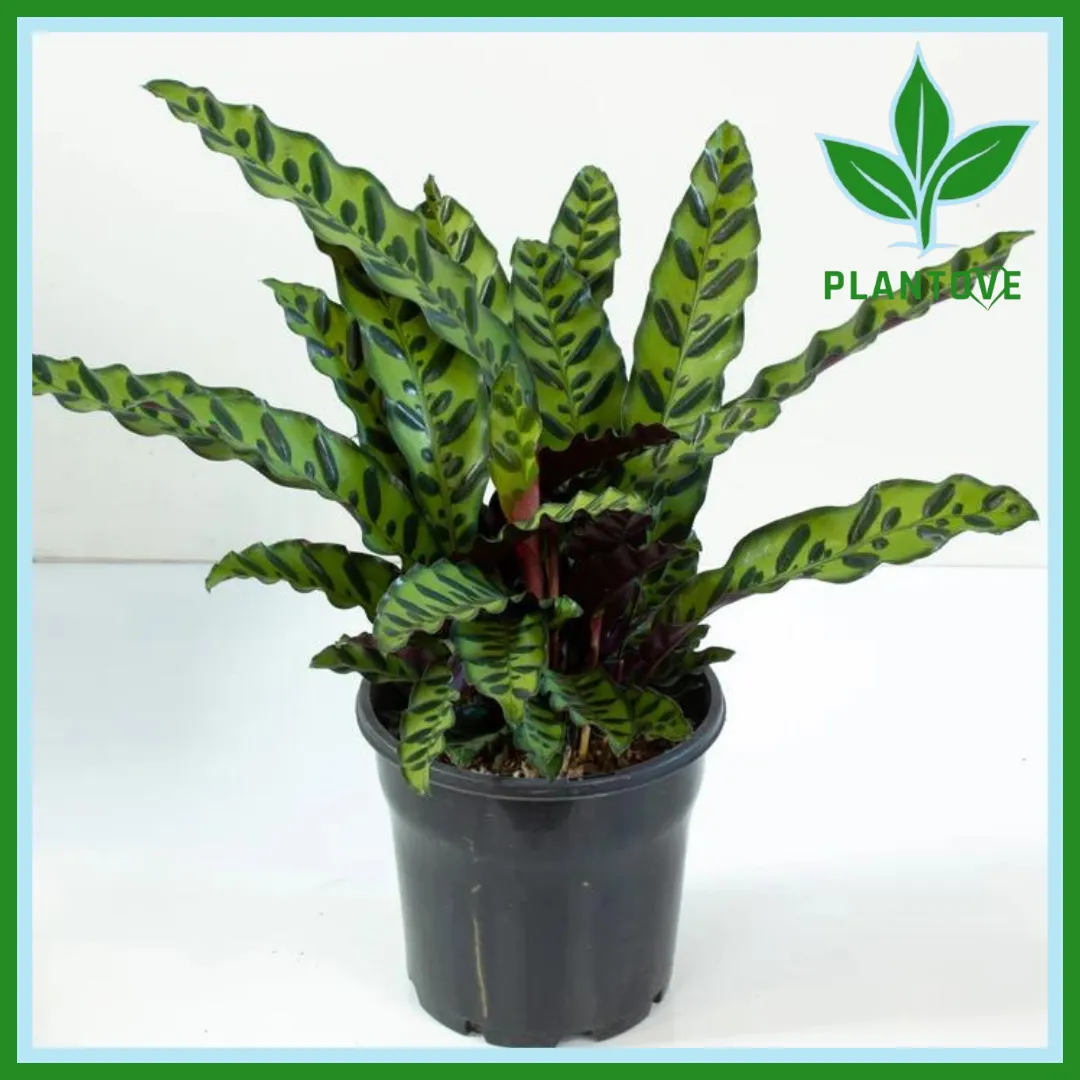The rattlesnake plant (Calathea lancifolia), also known as the rattlesnake calathea, is a striking addition to any indoor garden. Known for its unique foliage and vibrant patterns, this plant can enhance your living space while being relatively easy to care for. This article will provide you with an in-depth look at the rattlesnake plant, covering its benefits, care requirements, common problems, and propagation methods.
Understanding the Rattlesnake Plant
The rattlesnake plant belongs to the Marantaceae family, which is renowned for its decorative foliage and unique leaf movements. Native to the tropical rainforests of Brazil, the rattlesnake plant thrives in humid environments and is well-suited to indoor conditions.
Appearance
The rattlesnake plant features long, lance-shaped leaves with a distinct pattern of dark green spots and light green or yellowish stripes. The underside of the leaves is typically a rich burgundy color, adding a splash of color to your plant. As a low-growing plant, it creates a lush, bushy appearance that makes it ideal for adding greenery to various indoor spaces.
Benefits of the Rattlesnake Plant
Aesthetic Appeal
The rattlesnake plant’s unique leaf pattern and coloration make it a visual standout in any room. Its foliage can complement various interior styles, from modern to tropical, adding a touch of exotic elegance.
Air Purification
Like many houseplants, the rattlesnake plant contributes to better indoor air quality. It helps remove toxins such as formaldehyde and benzene from the air, promoting a healthier living environment.
Low Maintenance
The rattlesnake plant is relatively easy to care for, making it a great choice for both novice and experienced plant enthusiasts. With the right conditions, it can thrive with minimal effort.
How to Care for the Rattlesnake Plant
Light Requirements
The rattlesnake plant thrives in bright, indirect light. Direct sunlight can scorch its leaves, causing damage. Place your plant near a window with filtered light or use sheer curtains to diffuse the sunlight. If natural light is limited, consider using fluorescent grow lights to supplement its light needs.
Watering
Maintaining proper moisture levels is crucial for the rattlesnake plant. Keep the soil consistently moist but not waterlogged. Water the plant when the top inch of soil feels dry. Be sure to use room-temperature water, as cold water can shock the plant. Avoid letting the plant sit in standing water, which can lead to root rot.
Humidity
The rattlesnake plant thrives in high humidity environments, mimicking its natural rainforest habitat. Aim for a humidity level of 50% or higher. You can increase humidity by placing a humidifier near the plant, using a pebble tray with water, or grouping it with other plants.
Temperature
This plant prefers temperatures between 65°F and 80°F (18°C to 27°C). Avoid exposing it to temperatures below 50°F (10°C) or placing it near drafts or heating vents. Sudden temperature fluctuations can stress the plant and lead to problems.
Soil
Use a well-draining, peat-based potting mix for the rattlesnake plant. A mix designed for tropical plants or a combination of peat, perlite, and pine bark works well. Ensure that the pot has drainage holes to prevent water from accumulating at the bottom.
Fertilization
Fertilize your rattlesnake plant monthly during the growing season (spring and summer) with a balanced, water-soluble fertilizer. Reduce feeding to every 6-8 weeks during the dormant period (fall and winter). Over-fertilizing can lead to salt build-up and damage the plant.
Common Problems with Rattlesnake Plants
Leaf Curling
Leaf curling can occur due to low humidity or improper watering. Ensure that the plant receives enough moisture and maintain high humidity levels. Adjust watering practices to avoid both under and over-watering.
Brown Leaf Tips
Brown leaf tips are often a sign of low humidity, over-fertilization, or inconsistent watering. Increase humidity, reduce fertilizer application, and adjust watering practices as needed.
Yellowing Leaves
Yellowing leaves can indicate overwatering, poor drainage, or nutrient deficiencies. Check the soil moisture, ensure proper drainage, and consider adjusting your fertilization routine.
Pests
Rattlesnake plants can attract pests such as spider mites, aphids, and mealybugs. Inspect your plant regularly for signs of infestation. Treat pests with insecticidal soap or neem oil, and ensure proper plant hygiene.
Propagation of the Rattlesnake Plant
Division
The most common method for propagating rattlesnake plants is through division. Here’s how you can propagate your plant:
- Choose the Right Time: Propagate your plant during the spring or early summer when it is actively growing.
- Prepare the Plant: Gently remove the plant from its pot and carefully separate the root ball into smaller sections. Each section should have a few stems and roots.
- Re-pot: Plant each division into a new pot filled with fresh, well-draining potting mix. Water the newly potted divisions thoroughly.
- Care for Divisions: Keep the new plants in a warm, humid environment with bright, indirect light. Maintain consistent moisture until the plants establish themselves.
Leaf Cuttings
Although less common, you can also propagate rattlesnake plants from leaf cuttings. Here’s a simplified process:
- Select a Healthy Leaf: Choose a healthy, mature leaf from the parent plant.
- Cut and Prepare: Cut the leaf at the base, just above the stem. Allow the cutting to callous over for a few hours.
- Rooting Medium: Place the cutting in a pot with a mix of perlite and peat. Keep the medium moist but not soggy.
- Cover and Wait: Cover the pot with a plastic bag or dome to maintain humidity. Place it in a warm, bright area with indirect light.
- Transplant: Once roots have developed (typically 4-6 weeks), transplant the cutting into a regular potting mix.
Conclusion
The rattlesnake plant is an eye-catching and beneficial addition to any indoor garden. With its unique appearance, air-purifying qualities, and relatively low maintenance requirements, it’s an excellent choice for plant enthusiasts of all levels. By following the care tips and addressing common issues, you can enjoy a thriving rattlesnake plant in your home.
Whether you’re dealing with plant care, propagation, or troubleshooting, understanding the specific needs of the rattlesnake plant will help you maintain a healthy and beautiful plant. Happy gardening!

